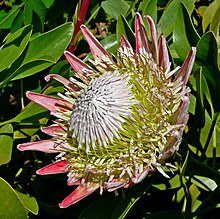

How would you similar to own a univers? Tniversehis will most likely in no way take place but you can raise a plant which produce "showy flowers" in an "logical arrangement of cosmic size". Cosmos is the flower you should raise. Spanish priests grow cosmos in their duty gardens in Mexico. The lightly located petals lead them to christen the flower "Cosmos," the Greek word for concord or planned universe. Cosmos, like many of our warm weather annuals such as marigolds, originated in Mexico and South America.
Cosmos belongs to that vast family of plants known as Compositae. Although here are 20 branded type of cosmos, two yearly type Cosmos sulphureus and Cosmos bipinnatus, are the popular familiar to home gardeners. These two type are nearly all simply differentiate by leaf structure and flower color. The foliage of C. sulphureus are extended with thin lobes and bushy boundaries The flower insignia of this species are forever sunglasses of yellow, orange or red. The C. bipinnatus has foliage that are thinly cut into threadlike segment. The flora look alike to ferns. The flowers are white or a range of tinted lenses of pink to dark rose.
Cosmos sulphureus (Yellow Cosmos) - the class local to the Americas - is my preferred and the single I advise you attempt if you have not at all grown-up cosmos.. Plants of yellow cosmos can range in height from 4 to 7 feet but the cultivated varieties such as 'Crest Red', 'Ladybird Dwarf Red', 'Ladybird Dwarf Gold', 'Ladybird Dwarf Orange', 'Ladybird Dwarf Lemon', and Yellow Cosmos - Klondyke Mix are not as tall. The flower head are collected of recording and beam flowers. The disc, or middle flowers are yellow: the beam, or external petals variety as of light yellow or mustard to orange-scarlet. Red is a moderately fresh toting up to the color variety of C. sulphureus. The resident type is golden-yellow to orange.
Is C. sulphureus cosmos simple to produce? You bet they are! Here is the educational in order provide by John Thomas of Wildseed Farms who charge C. sulphureus cosmos with an 80 percent plant achievement: YELLOW COSMOS INFORMATION FROM WILDSEED FARMS
wealthy lush soil be apt to create oddly tallgangly plants. Yellow cosmos require occupied sun. Sow seed of C. sulphureus in near the start spring because seedling are not winter enduring The regular planting achievement with this type is 80 percent. The plant stature is 2 - 4 feet depending on civilization and diversity chosen Plants will grow in 7 - 21 days when the earth hotness is best for germination at 70 - 80 degrees F. Plant seed 1/16 inch deep by raking into the soil. C. sulphureus plants bloom from May - November. Plants should be shear every 30 days or whenever seed pods predominate. Large areas can be seeded at a rate of 15 pounds per acre C. sulphureus plants bloom approximately 50 - 55 days after germination. Yellow cosmos wants to be replanted every spring for continued success.
Yellow cosmos is simple to create from kernel Rich, fertile situation are not essential to produce yellow cosmos, but sufficient drainage is. The seeds may be sown outdoors after all risk of ice is history and the earth has warmedwar to at slightest 65 degrees F. Scatter the seeds correct where the yellow cosmos are to be display Firm or collect seeds into a wobbly soil -- if the seed is plant too profound germination can be pretentious stay the earth damp for 5 - 10 days following seeding. Seeds will sprout in 7 - 21 days. If the in the early hours spring has been chilly soil temperature will stay cool also. If the earth temperature is under 65 F., seeds may not germinate as fast. Thinning is in fact not essential.
Yellow cosmos is a sun - loving yearly it will not make as a lot of bloom if adult in the shadow. decide site l that receive at slightest 8 - 10 hours of through sunbathe sunlight. Cosmos will carry out best if adult in well-drained dirt Yellow cosmos is not a serious feeder. overload fertilization will reason plants to create extreme sheet increase at the cost of flower making.







 Of the several kinds of Carnations, the three most common are annual carnations, border carnations and perpetual-flowering carnations.
Of the several kinds of Carnations, the three most common are annual carnations, border carnations and perpetual-flowering carnations. 



